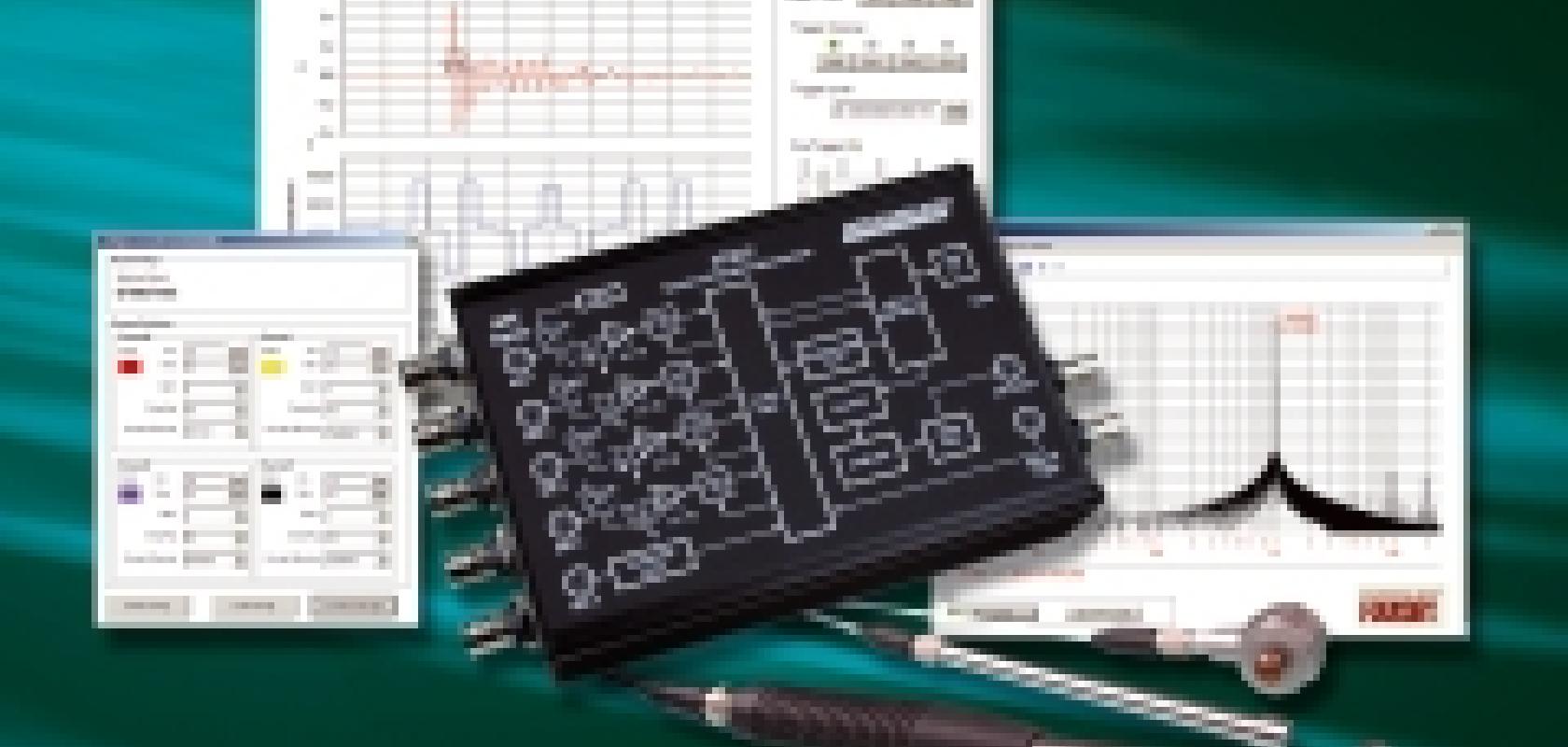Data Translation has launched its DT9837A model, which is an accurate and rugged USB data acquisition module for sound and vibration measurement.
It features four 24-bit IEPE (ICP) sensor inputs, which are synchronised with an analogue (24‑bit) output and an additional tachometer input. As the compact module is self-powered via the USB connection, no external power supply is needed. The DT9837A is thus ideally suited for portable use with a notebook, for example.
The four analogue inputs are each provided with a 24-bit Delta-Sigma A/D converter. The sampling rate (195Hz to 52.7kHz) and the threshold trigger is programmable. In addition, the 4mA current source for the ICP sensor can be enabled or disabled separately for each input, and the user can choose between AC or DC coupling and gains of 1 or 10.
The module supports simultaneous and synchronous analogue input, tachometer input and analogue output operations. Besides measuring rotation speeds, the tachometer input can also be used for phase measurements between the tachometer input and the A/D samples, thereby achieving a resolution of 37ns (0.002°) at up to 10,000 rpm. The 24-bit analogue output allows the continuous output of white noise, sine waves or any other waveform. A virtual readback channel from the analogue output guarantees perfect correlation of all signals in the I/O data streams.
Users requiring eight channels can couple two modules and synchronise the clock frequency and triggering via a sync port. The result is a high-performance USB data acquisition system without external power supply, featuring eight analogue inputs, two tachometer inputs and two analogue outputs for sound, vibration and sonar measurement.
The USB module ships with a software applet for instant out-of-the-box acquisition, display, storage and analysis of the signals. Using the Measure Foundry test and measurement software, users can modify and customise the program to suit their needs. Measure Foundry’s graphical development environment of course also supports the coupling and synchronisation of two modules.


